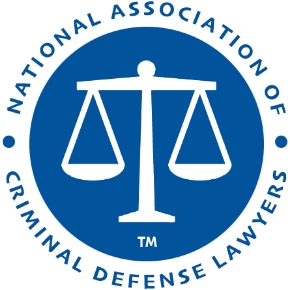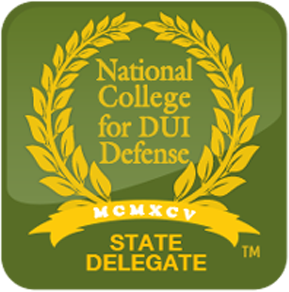Threats to Kill or Do Great Bodily Injury at Schools
Recently, law enforcement officers with the Tampa Police Department and Hillsborough County Sheriff’s Office have begun making more arrests of students and pranksters for “making a threat involving a school shooting” using Florida Statute Section 836.10.
The crime is charged as a second-degree felony. Because it is classified as a “violent” second-degree felony, juveniles are detained for 21 days because the offense adds 20 points to the risk assessment score sheet. Sometimes, the court will agree to release the child to the parents on secure home detention using a GPS monitor.
This article discusses the difficulty in using Florida Statute Section 836.10 when:
- a specific person is not threatened;
- when the threat doesn’t involve a specific threat to kill or do great bodily harm; or
- when the threat is not sent to the alleged victim or their family.
Prosecutors might charge the offense as making a false report of using a firearm in a school (F2) or causing disruption on a school campus (M2).
Many children charged with these offenses have never been in trouble before. From the child’s perspective, the message, picture, or drawing was merely a prank or a joke. It was never intended to scare anyone, trigger a law enforcement investigation, or disrupt the school.
The child and their parents are often surprised by how seriously law enforcement officers and school officials take these accusations.
Sometimes, law enforcement officers are overly aggressive even when it is clear that the facts do not rise to the level of a criminal act. Nevertheless, the officers sometimes “make the arrest and let someone else figure it out later.”
After the child is arrested for committing a delinquent act, not only is the child facing a case in juvenile court, but the school will often expel or change the child’s placement to an alternative or virtual school for at least one semester.
Attorney for Section 836.10 Crimes in Tampa, FL
After a student is accused of threatening to kill or do great bodily injury on a social media platform under Section 836.10, contact an experienced criminal defense attorney at the Sammis Law Firm in Tampa, FL.
We can help you understand the elements of the offense and the best defenses to fight the charges. Contact us to learn more about how to fight for an outright dismissal of the charges.
We represent juveniles charged with section 836.10 threats to kill or do great bodily injury crimes throughout Hillsborough County, FL, and the surrounding counties in the greater Tampa Bay area.
Our juvenile defense attorneys in Tampa, FL, can also help you deal with the disciplinary hearing at the school board to get the child back into school as soon as possible.
Call (813) 250-0500.
Elements of Florida Statute Section 836.10
Each element of Florida Statute Section 836.10 must be proven beyond all reasonable doubt. Florida Statute Section 836.10 prohibits a person from:
- Writing or composing and sending to any person:
- A letter;
- Inscribed communication; or
- Electronic communication;
- Containing a threat to kill or do bodily injury to:
- The person to whom the letter or communication was sent; or
- Any member of the person’s family.
In response to amendments made by the Florida Legislature to section 836.10, Florida Statutes, in 2018, instruction 8.22 was amended to add “conduct a mass shooting” and “conduct an act of terrorism” to the title of the instruction and name of the crime. Florida law now provides for two ways to violate section 836.10.
After the 2018 amendment, new elements are added reading:
- (Defendant) [made] [posted] [transmitted] a writing or other record.
- The writing or other record contained a threat to conduct [a mass shooting] [or] [an act of terrorism].
- (Defendant) [made] [posted] [transmitted] the writing or other record in a manner that allowed another person to view the threat.
In re Std. Jury Instructions in Crim. Cases—report 2018-11, 260 So. 3d 1024, 1024, 2018 Fla. LEXIS 2598, *2-3, 44 Fla. L. Weekly S 1, 2018 WL 6696033.
So now, 8.22 is entitled “WRITTEN THREAT TO [KILL] [DO BODILY INJURY] [CONDUCT A MASS SHOOTING] [CONDUCT AN ACT OF TERRORISM]” under § 836.10, Fla. Stat.
The standard jury instructions provide:
To prove the crime of Written Threat to [Kill] [Do Bodily Injury] [Conduct a Mass Shooting] [Conduct an Act of Terrorism], the State must prove the following three elements beyond a reasonable doubt:
There are two ways to violate § 836.10, Fla. Stat. Give as applicable.
- (Defendant) [wrote] [composed] a[n] [letter] [electronic communication] [inscribed communication].
- The [letter] [electronic communication] [inscribed communication] contained a threat to [kill] [do bodily injury to] [(victim)] [any member of (victim’s) family].
- (Defendant) [sent] [procured the sending of] that [letter] [electronic communication] [inscribed communication] to (victim).
It is not necessary for the State to prove that the [letter] [electronic communication] [inscribed communication] had been signed.
Definitions. Give if applicable.
An “inscribed communication” is a communication that is written or printed.
To “procure” means to persuade, induce, prevail upon, or cause a person to do something.
*The second way to violate § 836.10, Fla. Stat. is set forth below.
- (Defendant) [made] [posted] [transmitted] a writing or other record.
- The writing or other record contained a threat to conduct [a mass shooting] [or] [an act of terrorism].
- (Defendant) [made] [posted] [transmitted] the writing or other record in a manner that allowed another person to view the threat.
A “record” includes an electronic record.
A violation of s. 836.10, F.S., is a second-degree felony, punishable by up to fifteen (15) years in prison and a fine of up to $10,000. The crime of Threats to Kill or Do Great Bodily Injury under s. 836.10, F.S, is classified as a Level 6 in the Criminal Punishment Code Offense Severity Ranking Chart, which requires 36 sentencing points.
Criminal defense attorneys have challenged the statute on behalf of their clients charged with this offense by arguing that the statutory language is vague and overbroad.
Defense attorneys are argued that the statute could criminalize innocent written speech because it does not require proof that the defendant had the specific intent to cause the threatened harm. See Saidi v. State, 845 So. 2d 1022, 1026 (Fla. 5th DCA 2003).
In many of these cases, the person making the threat has no intention of actually carrying out the threat. Florida courts have held that s. 836.10, F.S., does not require the actual intent to harm or the apparent ability to carry out the threat. Id. at 1027.
The courts found that the statute is not vague because it is definite enough to give notice of the behavior it proscribes. The courts have also found that the statute is not overly broad because the language of the statute is limited enough in its objective to target threats to injure persons.
Defining the Term “Threaten”
In Romero v. State, 314 So. 3d 699, 706-707, 2021 Fla. App. LEXIS 700, *13-14, 46 Fla. L. Weekly D 198, the court explained:
Although “threaten” is arguably subject to a myriad of varied and nuanced definitions, as was recently observed by our sister court in Puy v. State, 294 So. 3d 930, 933 (Fla. 4th DCA 2020), “Merriam-Webster online dictionary’s first definition for ‘threat’ is ‘an expression of intention to inflict evil, injury, or damage.'” (Quoting Threat, Merriam-Webster, https://www.merriam-webster.com/dictionary/threat (last visited Apr. 13, 2020)); see also Threat, Webster’s Third New International Dictionary (2002) (defining “threat” as “an expression of an intention to inflict evil, injury, or damage”).
There, the Fourth District Court of Appeal expounded upon the meaning to preserve the constitutionality of section 836.10, Florida Statutes. The court found that “whether a written communication constitutes a threat under section 836.10 depends on whether the message was ‘sufficient to cause alarm in reasonable persons.'” Puy, 294 So. 3d at 933 (quoting Smith v. State, 532 So. 2d 50, 53 (Fla. 2d DCA 1988)).
Ways the Threats Might be Sent
In 2010, the Florida Legislature amended s. 836.10, F.S., to add “electronic communication” to the types of written threats that are prohibited but left intact, the requirement that the written threat be sent to the person who is the subject of the threat or to a person whose family member is the subject of the threat.
As the court explained in J.A.W. v. State, 210 So.3d 142, (Fla. 2d DCA 2016), to make a showing that the threat was sent, the statute requires two events including:
- sending the communication to a particular person; and
- receipt of the communication by the person being threatened.
Id. at 143 (citing State v. Wise, 664 So.2d 1028, 1030 (Fla. 2d DCA 1995)).
When the threat is not necessarily made against a particular individual who receives the threat, but the threat is more random in nature, it becomes more difficult for the prosecutor to prove the offense. The most difficult cases for the prosecutor to prove at trial involve a threat made on social media.
The court in J.A.W. v. State, 210 So.3d 142, 145-146 (Fla. 2d DCA 2016), gave the following explanation:
“…many threats made on social media will fall outside the narrow language of section 836.10, which was originally written with pen-and-paper letters in mind….
The narrow language of section 836.10 will not encompass many threats made via social media because…social media is often used to post communications publicly, for the whole world to see, instead of sending those communications directly to any specific person. (citation omitted)
This is problematic because, even though social media posts may not travel directly, they are often shared with the understanding or expectation that they will be widely distributed, even outside the original poster’s own network of friends or followers.”
Threats on Social Media
As more people use social media platforms to communicate, it is becoming the most common place in which such threats occur. Social media sites can include Facebook, Snap Chat, Instagram, Pinterest, LinkedIn, and Twitter.
One recent National School Safety and Security Services study found that social media and other electronic forms of communication were used in at least 35 percent of the violent threats to schools.
The study covered 315 documented threats for acts of violence between August 2013 and January 2014. Most of those threats involved school bomb threats, shooting threats, and hoaxes.
Schools are often disrupted even when the threat of a random act of violence at school turns out to be false. Law enforcement officers are taking these threats more seriously after the recent school shooting at Marjory Stoneman Douglas High School in Parkland, Florida. Sometimes, the schools are put on lockdown while the officers investigate the threats.
Cases Applying Section 836.10, F.S., to Threats Made on Social Media
In J.A.W. v. State, 210 So.3d 142 (Fla. 2d DCA 2016), the appellate court reversed a child’s disposition for violating s. 836.10, F.S., after it was alleged the juvenile posted written threats to kill or do bodily injury on Twitter.
In the J.A.W. case, the following Twitter posts were made over the course of several days:
- can’t WAIT to shoot up my school;
- it’s time (this tweet included a photo of a gun being put in a backpack);
- My mom and dad think I’m serious about shooting up my school I’m dying;
- school getting shot up on a Tuesday;
- night f[***]ing sucked can’t wait to shoot up my school soon;
- I sincerely apologize to anyone who took me seriously. I love my high school and honestly own no weapons to want to harm anyone in any way.
Id. at 143. An out-of-state watchdog group member reported the threats to local police, who contacted the juvenile’s school officials, informing them of the threats. Id. After the disposition of the case in juvenile court, the criminal defense attorney filed a direct appeal of the judgment and sentence to the Second District Court of Appeals.
The appellate court found that because the juvenile publicly posted the tweets, rather than directly sending them to any student or school official, receiving the threats by school officials through local police was too far removed to support a conviction under s. 836.10, F.S. J.A.W. v. State, 210 So.3d 142 (Fla. 2d DCA 2016).
In J.A.W., the appellate court specifically acknowledged the difficulty of applying Section 836.10, F.S., to the modern forms of communication, recognizing that many threats made on social media fall outside the narrow scope of the law, which requires the threatening communication to be sent directly to a specific person who receives the threat.
Pending Legislature to Prohibit Threats on Social Media
In response to the decision in J.A.W., the Florida legislature has considered passing amendments to the statute to make it easier to prosecute cases involving threats on social media.
For example, pending legislation known as 2018 CS/SB 310 replaces the current statutory requirement that prohibits any person who writes or composes and sends a letter, inscribed communication, or electronic communication with a threat to kill or do bodily injury to a person or any member of the person’s family, with language that prohibits a person from making a threat to kill or do great bodily injury in writing or other record, including an electronic record, and posting or transmitting the threat in a manner that would allow another person to view it.
Additionally, the offense is decreased from a second-degree felony to a third-degree felony. The bill also changes the offense from Level 6 to Level 4 in the Criminal Punishment Code Offense Severity Ranking Chart, which decreases the offense’s sentencing points from 36 points to 22 points.
Additional Resources
Crack Down on Fake Threats of School Shooting in Hillsborough County – The police department in Tampa, FL, recently held a press conference promising to crash down on students and pranksters who target schools with fake threats of a shooting or bomb. Serious consequences occur after a student is accused of making a bogus threat regarding a school or school-related event. In the first month after school started in 2019, Superintendent Jeff Eakins reported that Hillsborough County had received 23 fake threats, not including 14 fake reports that came in through the Fortify Florida App, an anonymous tip line created in the wake of the Parkland shootings. Although investigators say only one arrest was made for those fake school threats. Officers with the Tampa Police Department make an arrest or detain the child for prosecution within the juvenile justice system if they develop “probable cause” that a crime occurred.
This article was last updated on Friday, May 26, 2023.















